Landscapes Collide
By David Boskovich
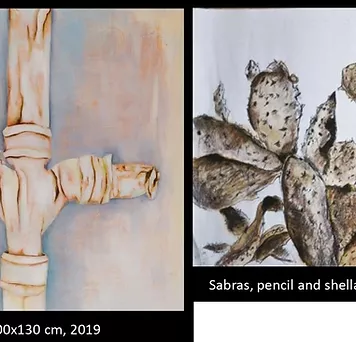
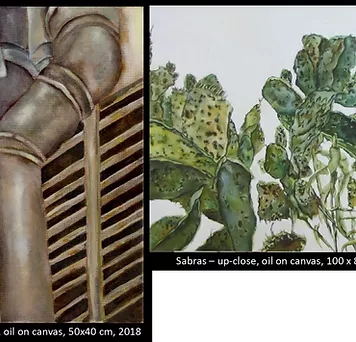
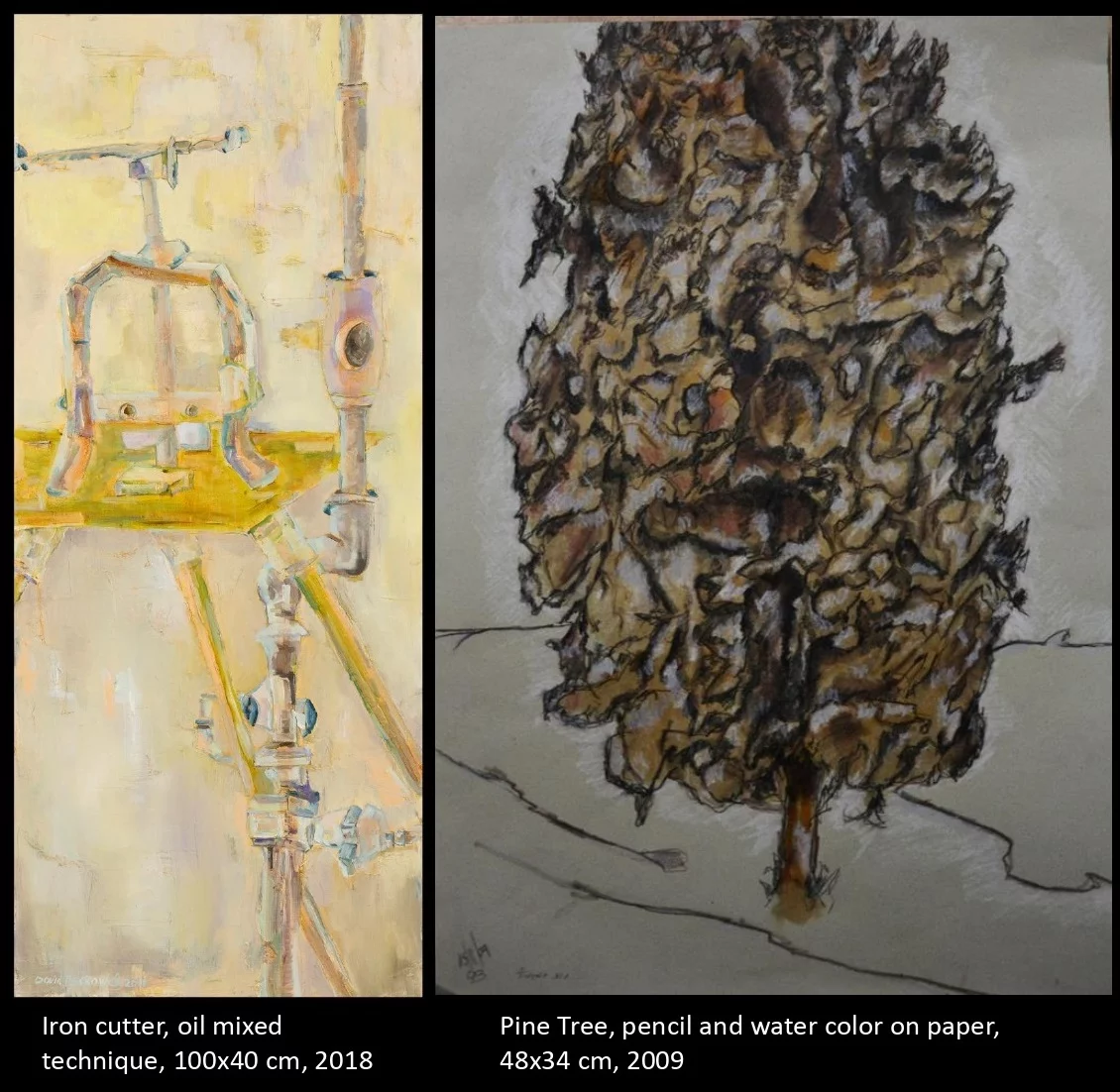
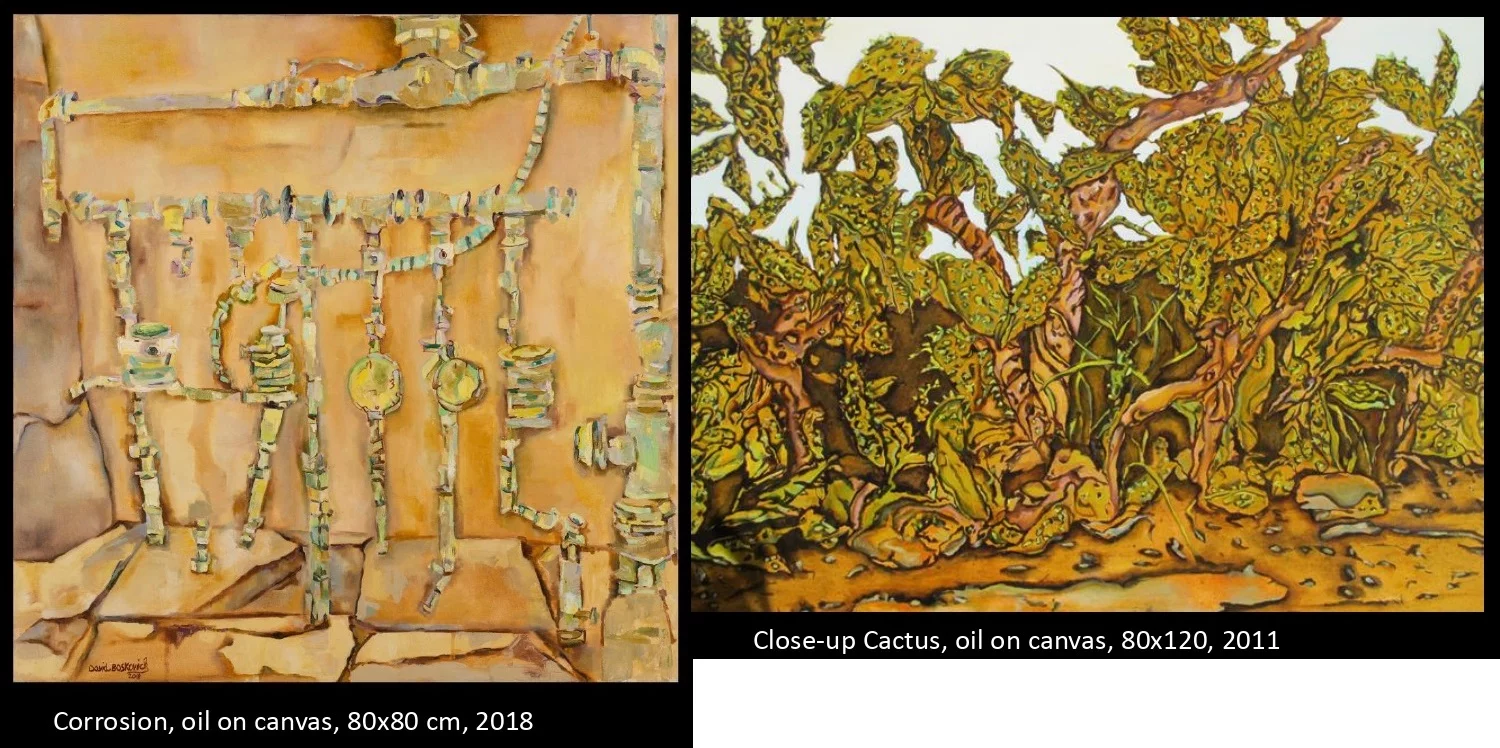
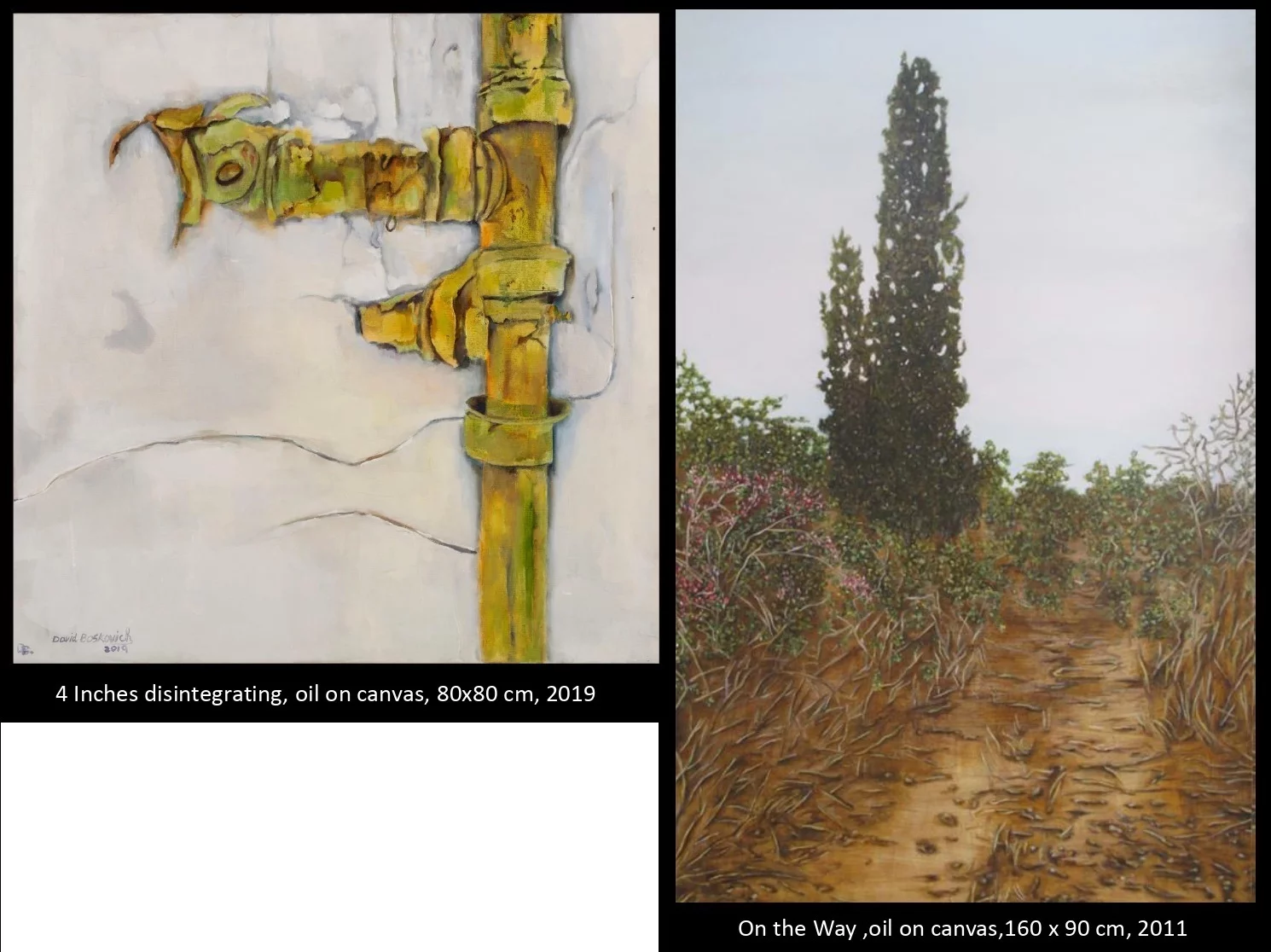

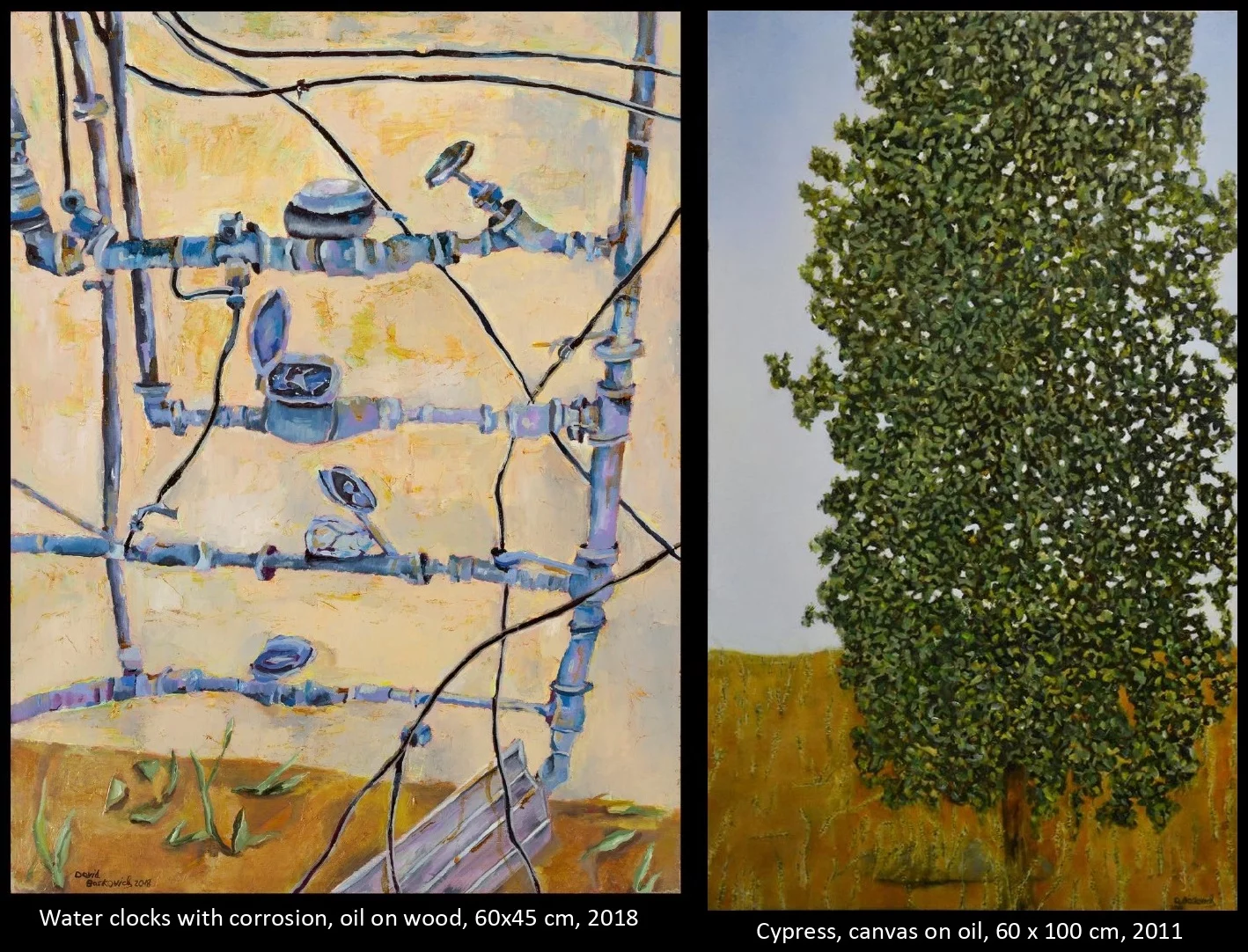

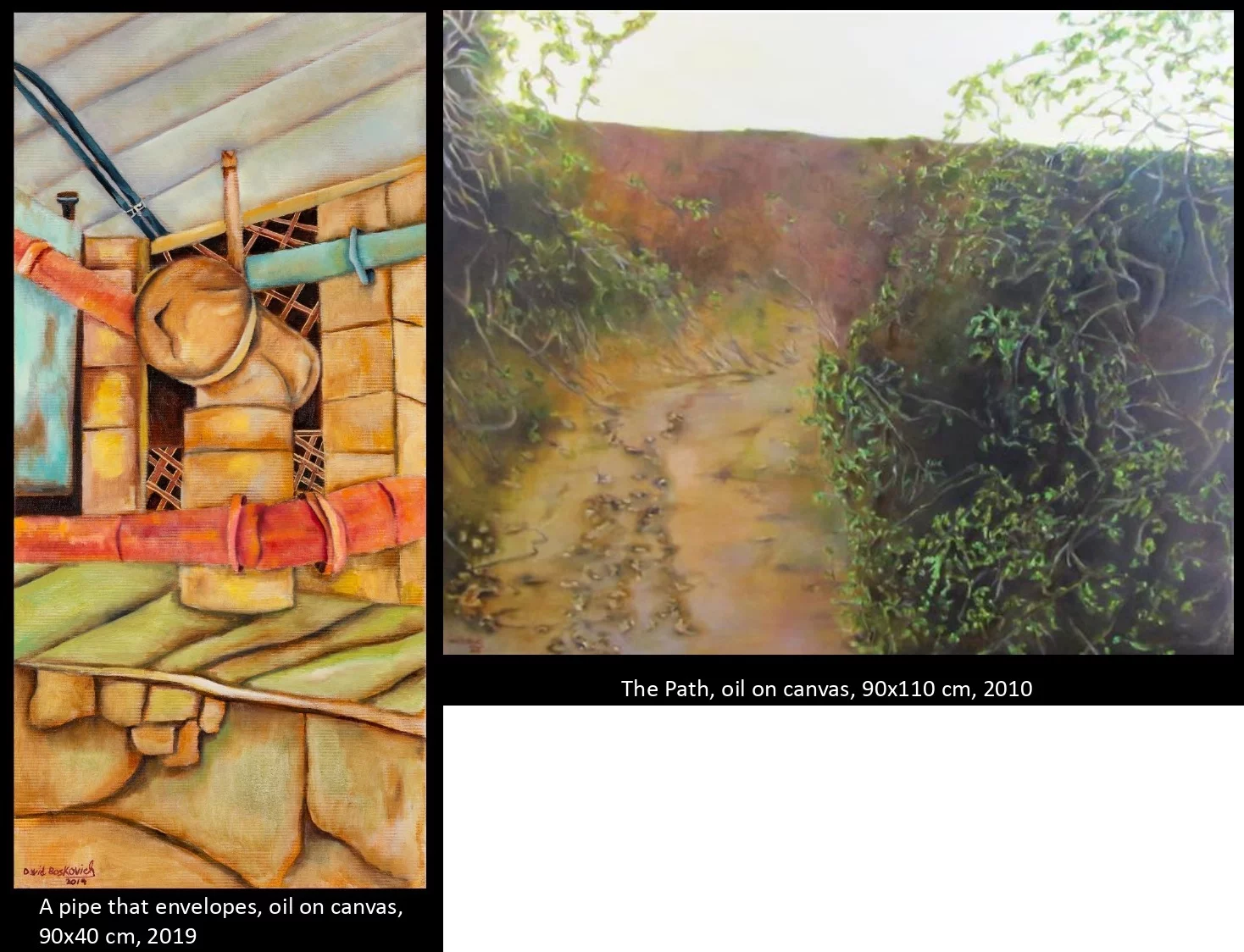
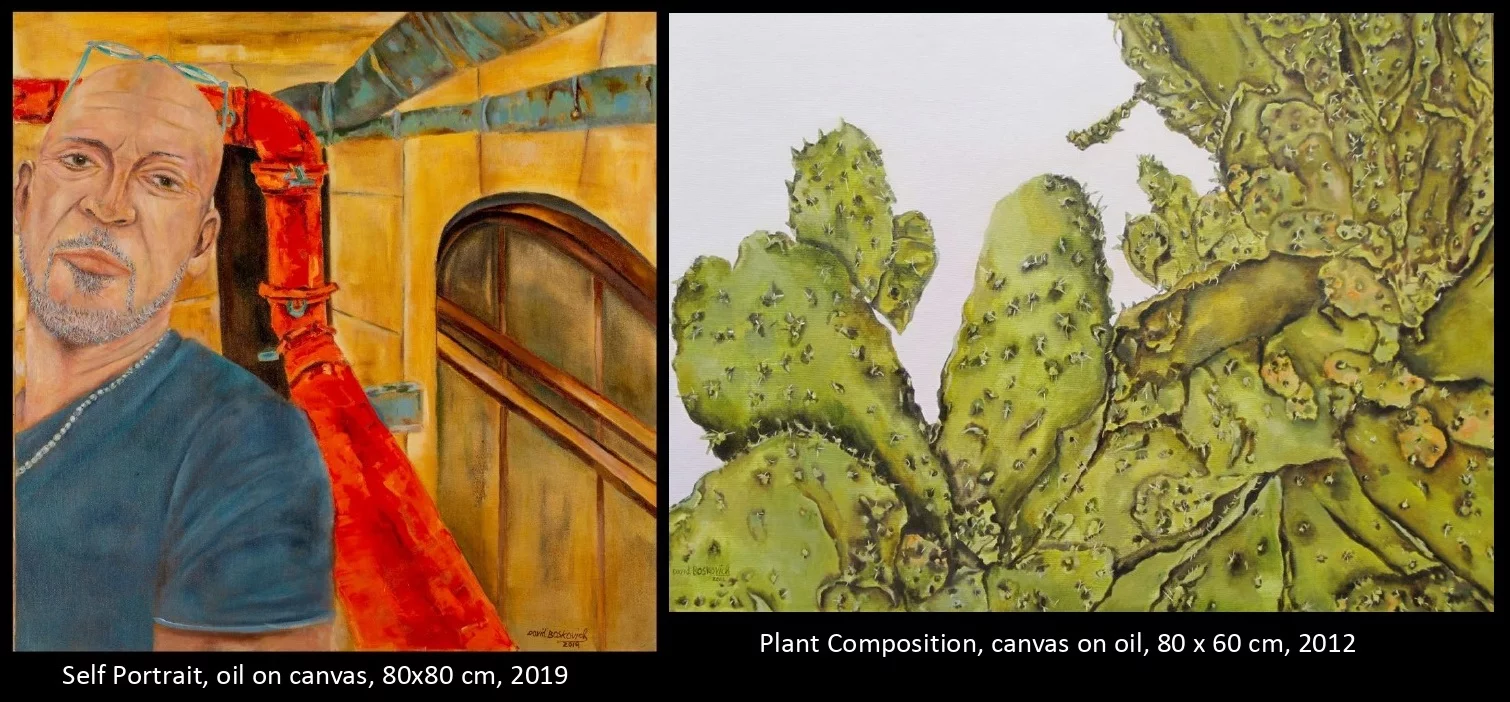
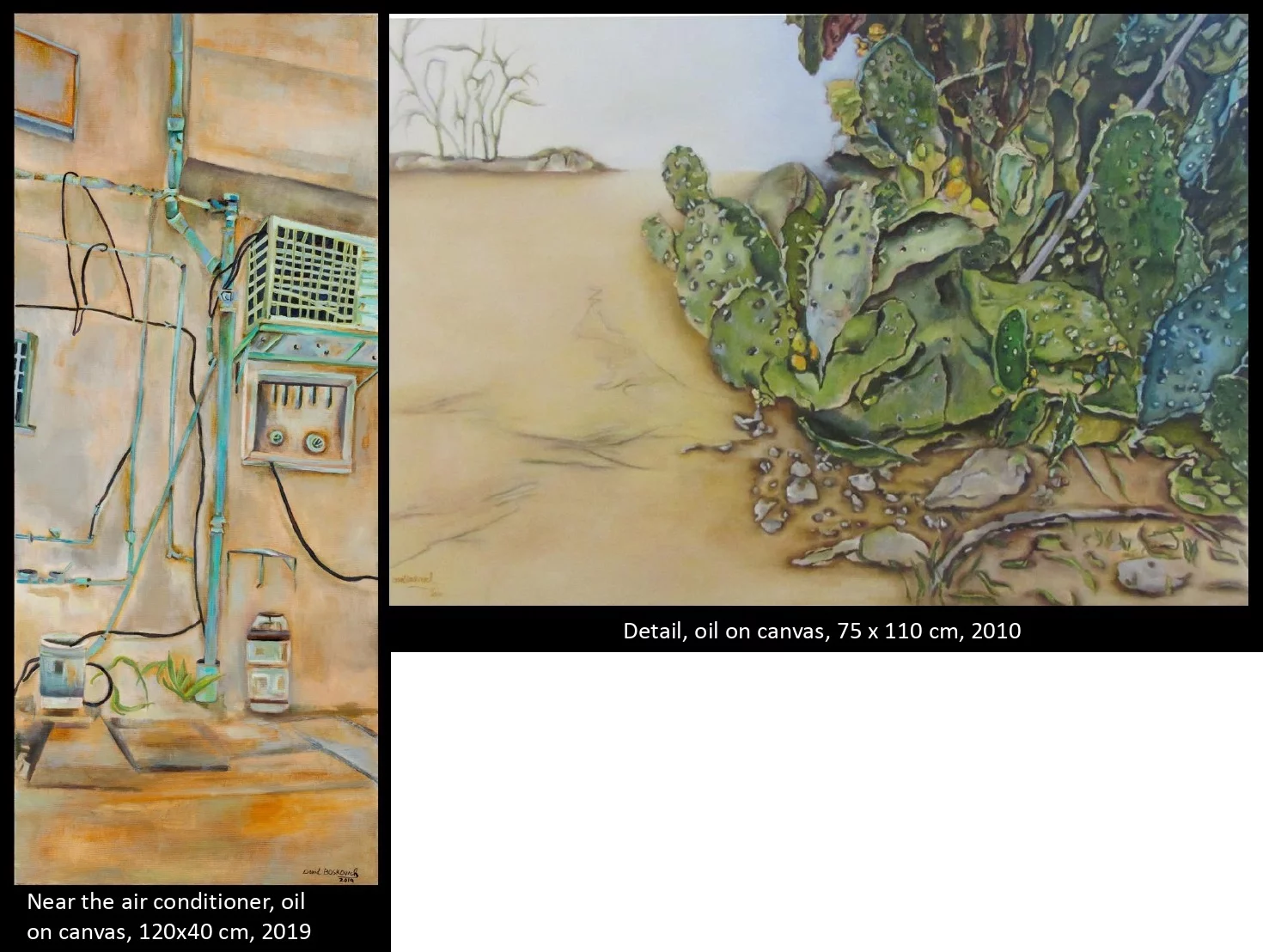
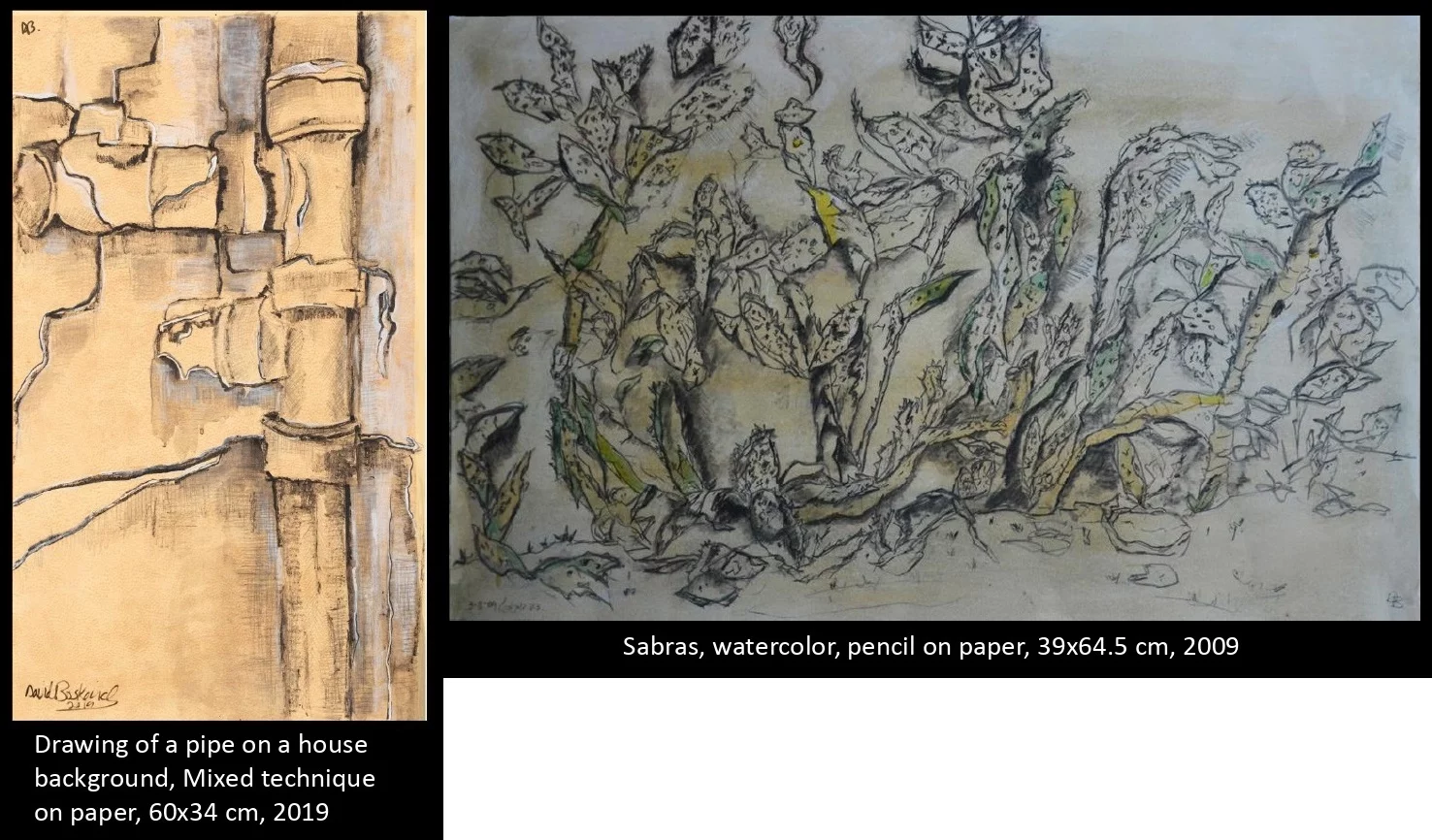
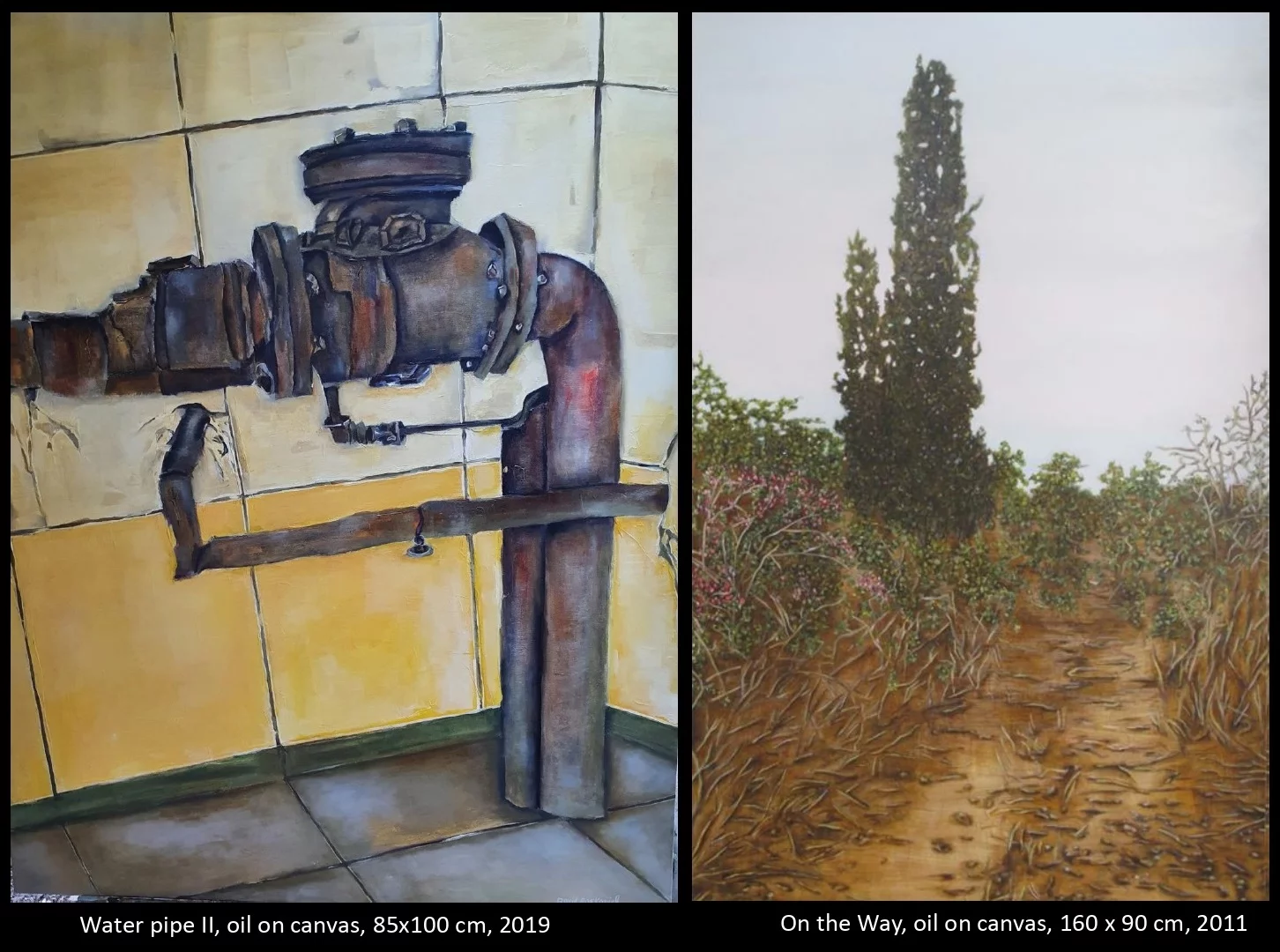

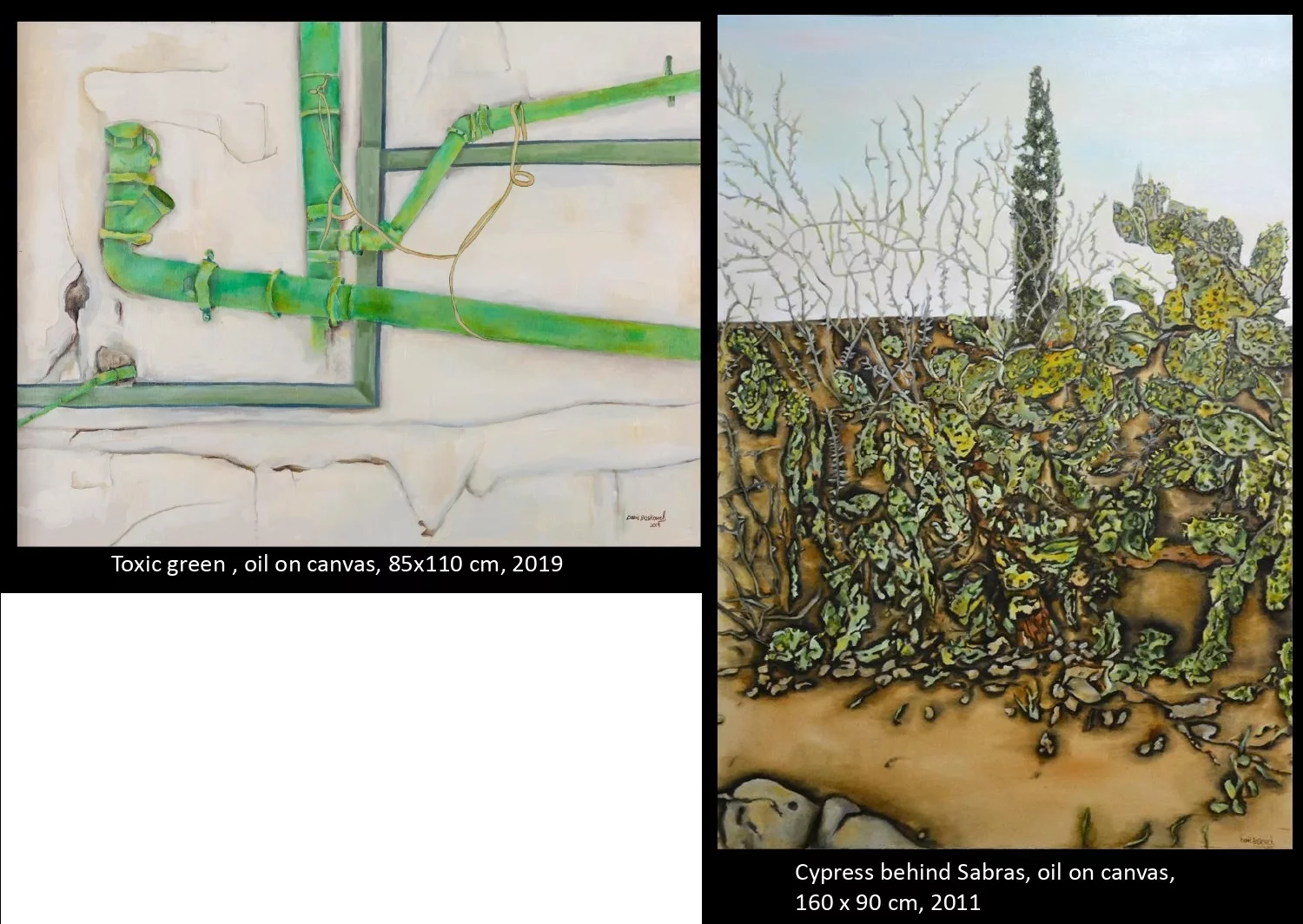
Humans turn landscapes and nature into cities and roads and leave our mark on the world. But this mark can be easily erased because when we neglect the structures we have constructed, nature works quickly to reclaim that which belonged to it. Most often when people think of nature they think of places that are free and isolated. "Nature" is often considered something that exists far from cities. But in Israel, the line between nature and urbanization is blurred. In our Israeli landscape, throughout Tel Aviv in particular, exists a unique nature, it blends in and blooms through pipes, on the buildings, out of the rust, between the distorted layers of neglect, wear, and corrosion common throughout the cities in this country, life emerges, bright and vivid. As someone who grew up in Israel, saw this disintegration and found it beautiful, I see in urban chaos both aesthetics and a catalyst. The combination of my two series illustrates this vision. "Pipes" - which focuses on the processes of retraction and disintegration created in the material. The process slowly degrades and crumbles the pipes and the various metal structures that surround us, giving them a new color and at the same time also peeling and exposing them. The retreat of the layers of matter allows its hidden layers to rise to the surface and be revealed to the observer as a distortion of matter and form. However, this process is reflected in new textures, contours, patterns, and colors as if they were a distorted mirror image of familiar material reality. The material retreat processes of pipes and structures in Tel Aviv that I have processed into reality on another level that enables magical realism. I found in the process of retraction of the pipes an aesthetic element that attracted me to build different compositions with the same shapes. When I looked at the pipes, the electrical wires, the chains that were a kind of visual chaos, and yet they created a certain rhythm for my visual imagination, which helped me to refine and reconnect the same compositions. The rhythm and movement created by the retreat and peeling processes in the structures and pipes I painted gave them momentum of life along with an organic vibe in bright colors. And "Zippori" - which focuses on the unrestrained, noble, free nature: spaces adjacent to the horizon where heaven and earth meet; Local landscape; An island of serenity that envelops me in peace; A sense of time-stopping in a bustling world, full of anxiety, hatred, and destruction; A diverse landscape of cypresses and thorny arms of Sabra, extending over the countryside of wavy hills. Nature opens the gates to the imaginative world of the wondrous and disconnects you from reality. While looking at and absorbing nature in all its details, a sensory experience that evoked associations built a world rich in creativity. The power of imagination moved me to the world of the magical and created a reality of multifaceted layers in which the object is in a constant process of variations. This state of emotion is the motivation, the urge for creativity, for paraphrases on the subject, while constantly searching for the construction of the pictorial balance between the miraculous world of imagination and the experience of reality.
About the Artist
David Boskovich
I was born in Tel Aviv to a musician couple, Alexander Uriah Boskovich, a senior composer of Israeli classical music, an educator and music critic, and Miriam Boskovich, a pianist and piano teacher at the Samuel Rubin Israel Academy of Music, Tel Aviv University. In 1976 I went to the United States to continue my painting studies at the Pennsylvania Academy of the Fine Arts in Philadelphia. In 1990, I was invited by Master Ernst Fuchs, one of the forerunners of Fantastic Realism, to work with him and serve as his assistant in Monte Carlo and Vienna. During my stay at Fuchs's studio in the south of France, I studied classical painting techniques used by the Flemish masters. In 1993, I returned to Israel with my family, and since then I have been teaching painting, and concurrently working with brain injury patients via art.